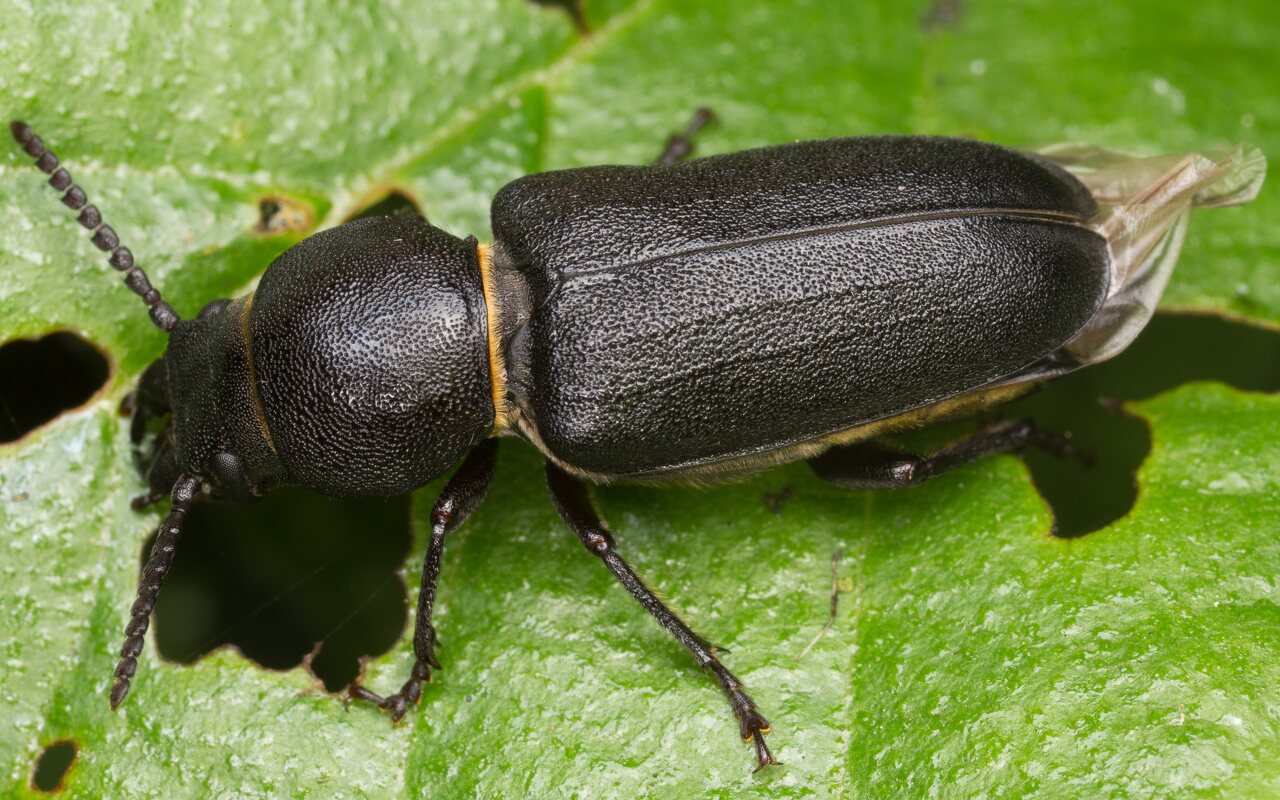
Spondylis buprestoides · trumpaūsis medkirtis
- Black Longicorn Beetle
- Waldbock
- trumpaūsis medkirtis
- melnais priežu celmu koksngrauzis
- kłopotek czarny
https://www.ukbeetles.co.uk/spondylis-buprestoides Adults are active from June to August, earlier or later depending on latitude etc. and are crepuscular or nocturnal, spending the day at rest among loose bark at the base of stumps and trunks, they do not feed and they are strong fliers, capable of dispersing over wide areas and they are strongly attracted to light.
Mating occurs on the ground close to the host plants which include various conifers, mostly Scots Pine, but also other pines and occasionally Norway spruce, Larch and Fir. After mating the females deposit small white eggs, around 2mm in length, among bark crevices low down on the host, sometimes digging deep into the soil to lay eggs among the roots. In general, damaged or decaying stumps or trunks are chosen.
Larvae initially feed under bark, causing galleries up to 1 cm wide but larger larvae bore into the xylem and excavate galleries up to 80 cm long which are packed with fibres and frass. After progressing down inside the trunk the tunnel turns perpendicular and ends in a pupal chamber 3 or 4 cm in length and around a centimetre from the wood surface, it is generally constructed a few centimetres below ground to around 75 cm above it. The larvae are white with dark, heavily sclerotized head and mandibles, and they grow up to 35mm long and the apex of the ninth segment carries characteristic, widely spaced urogomphi. Overwintering always occurs in the larval stage.
Pupation occurs from early in the year, from February until June, depending on latitude, and the pupa is distinctive; yellowish and up to 24mm in length. Adults emerge in early June through round exit holes 5 to 7 mm in diameter. A single stump or trunk may be riddled with galleries. Development takes between 2 and 4 years.
Kūnas 12-22 mm ilgio, juodas, kiek blizgantis. Apačia apaugusi trumpais rudais plaukeliais. Nors paprastai ūsuočių šeimos vabalai turi ilgas antenas, bet šio vabalo jos trumpos. Vabalai skraido birželio – rugsėjo mėn. vakarais ir naktimis. Gyvena pušynuose. Patelės kiaušinius deda ant pušų šaknų. Lervos takus graužia šaknyse. Vystymosi ciklas trunka 2-4 metus. Pažeidžia ne tik ligotus ir nusilpusius medžius, bet ir visiškai sveikus. Lietuvoje dažna rūšis.
Subfamily: Spondylidinae · medkirtėnai
‥
0 comments
Add a comment